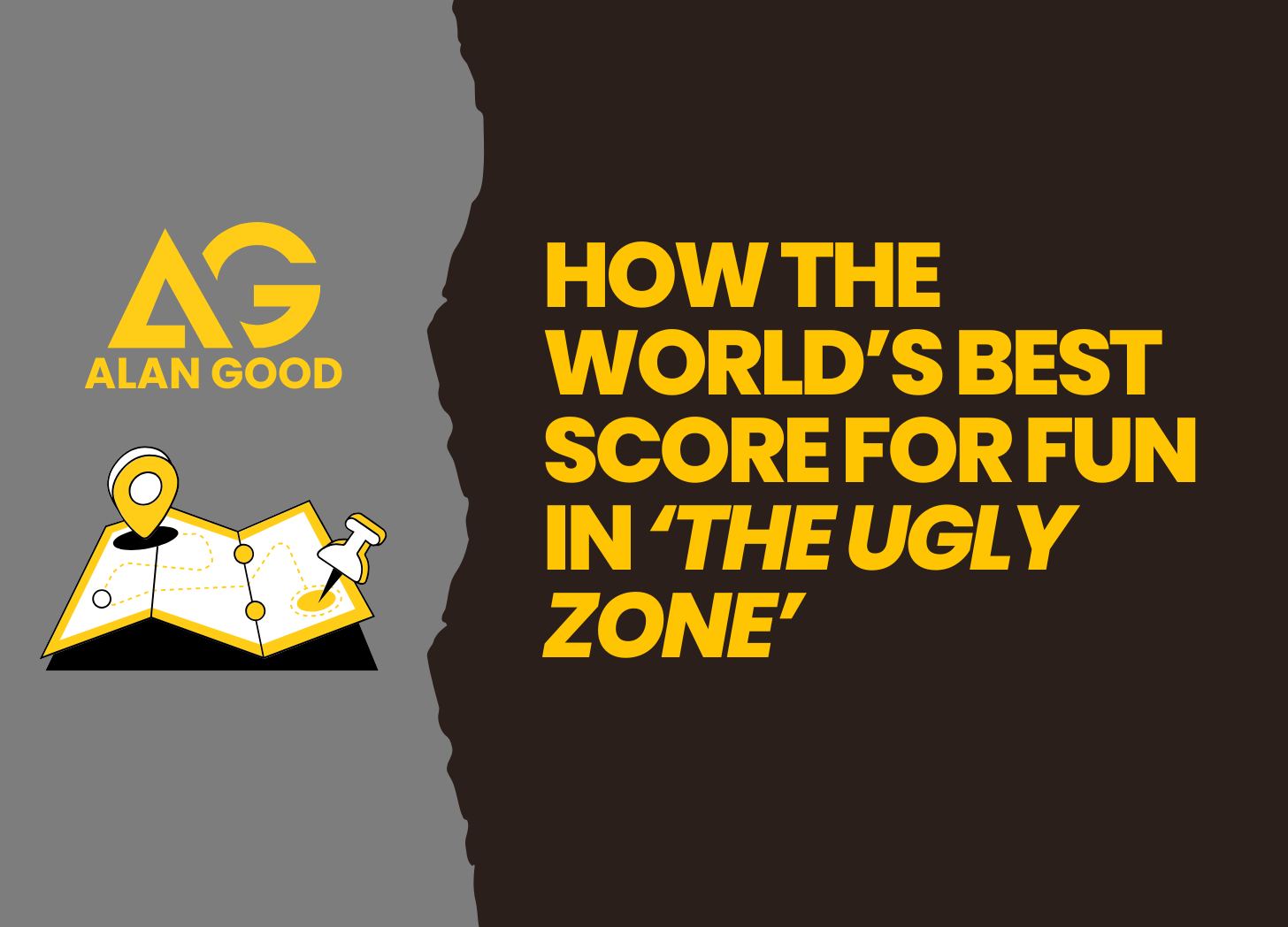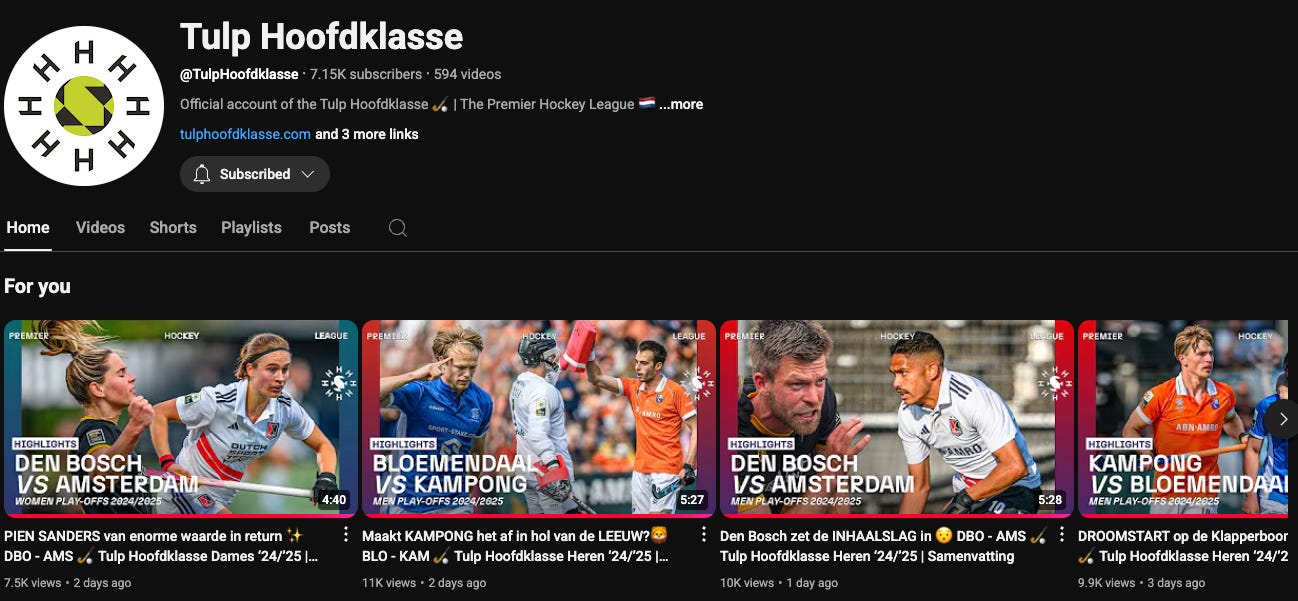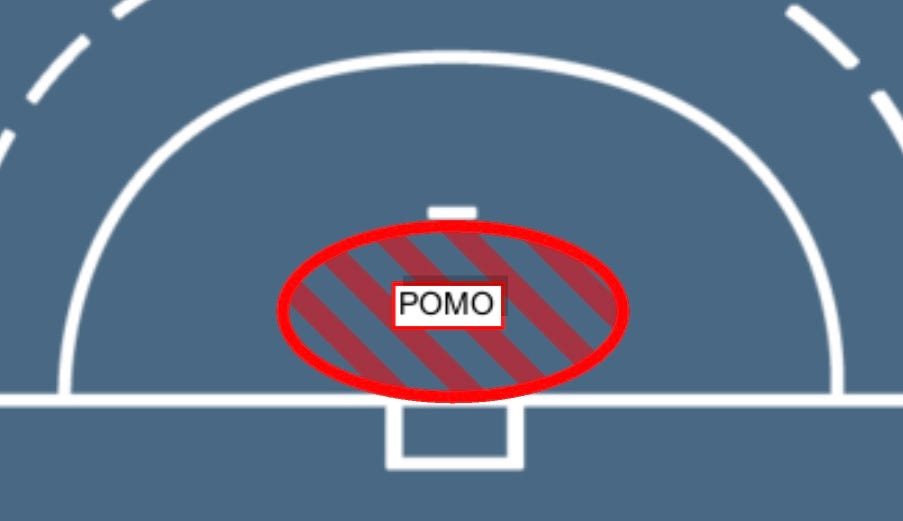Deliver early, arrive late, create connection
Three tactical goalscoring lessons from elite circle play in the Dutch Hoofdklasse
Like every other soccer-obsessed child in Ireland and England, I spent Saturdays in the 1990s waiting for Match of the Day.
Having to wait until 10:35pm to watch a TV highlights package of Premier League games seems quaint in today’s instant gratification era.
Nonetheless, my adult self has a new version of this waiting game - Hoofdklasse Mondays.
Before the working week begins, I’ll grab a coffee and settle in to watch highlights of the Dutch top division, as the weekend’s action is usually up by Monday morning in the USA.
For field hockey nerds, it’s as good as it gets. In a sport lacking exposure, they’re the best highlight packages going, and they feature the world’s best club hockey.
They provide weekly inspiration for my coaching.
While the regular season just started a few weeks ago, the playoffs in May are the most intriguing time to watch. Just like in the NCAA, teams that have faced each other in-season now get another crack at each other, but the losers go home.
Last May’s semi-finals - where the teams play on back-to-back days, and the winner on the aggregate score advances - contained exhibitions of exceptional POMO play.
POMO is an acronym, Position of Maximum Opportunity, coined by English soccer coach Charles Hughes. It refers to the tactical need to get the ball to the part of the pitch where goalscoring is most likely.
That’s the penalty area in soccer, but in field hockey, where goals can only be scored from inside the circle, it refers to the area between the penalty spot and the goal.
Some refer to this as the 9-yard circle, or the small D. Olympic gold medal-winning goalkeeper Maddie Hinch prefers to call it the more evocative Ugly Zone.
Simon Blanford’s statistical work in this area has shown it in eye-watering detail.
Andrew Daly’s research on NCAA field hockey revealed that a shot on target is 119% more likely to be a goal if it’s a deflection, most of which happen in or around the POMO.
Yet, how much time do we spend practicing shooting from the outer reaches of the circle versus training the grittier, close-in finishes? 🤔
Knowing you need to get the ball to the POMO to increase your scoring chances from open play is one thing.
That’s the where taken care of.
But the how and the what?
That’s what we’re going to look at in the rest of this post - with the help of some of Dutch hockey’s finest - to see what aspiring college players can learn from it.




